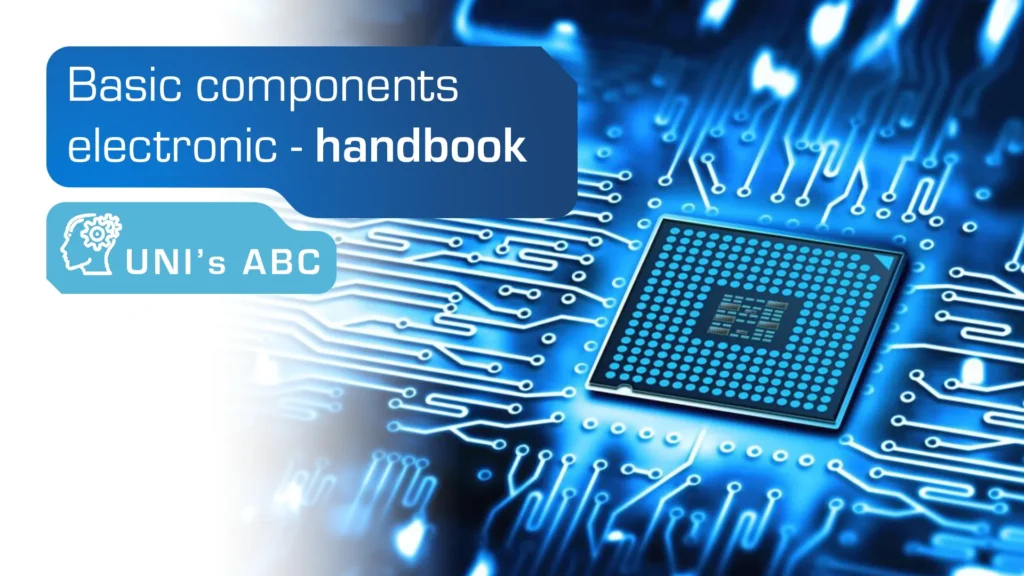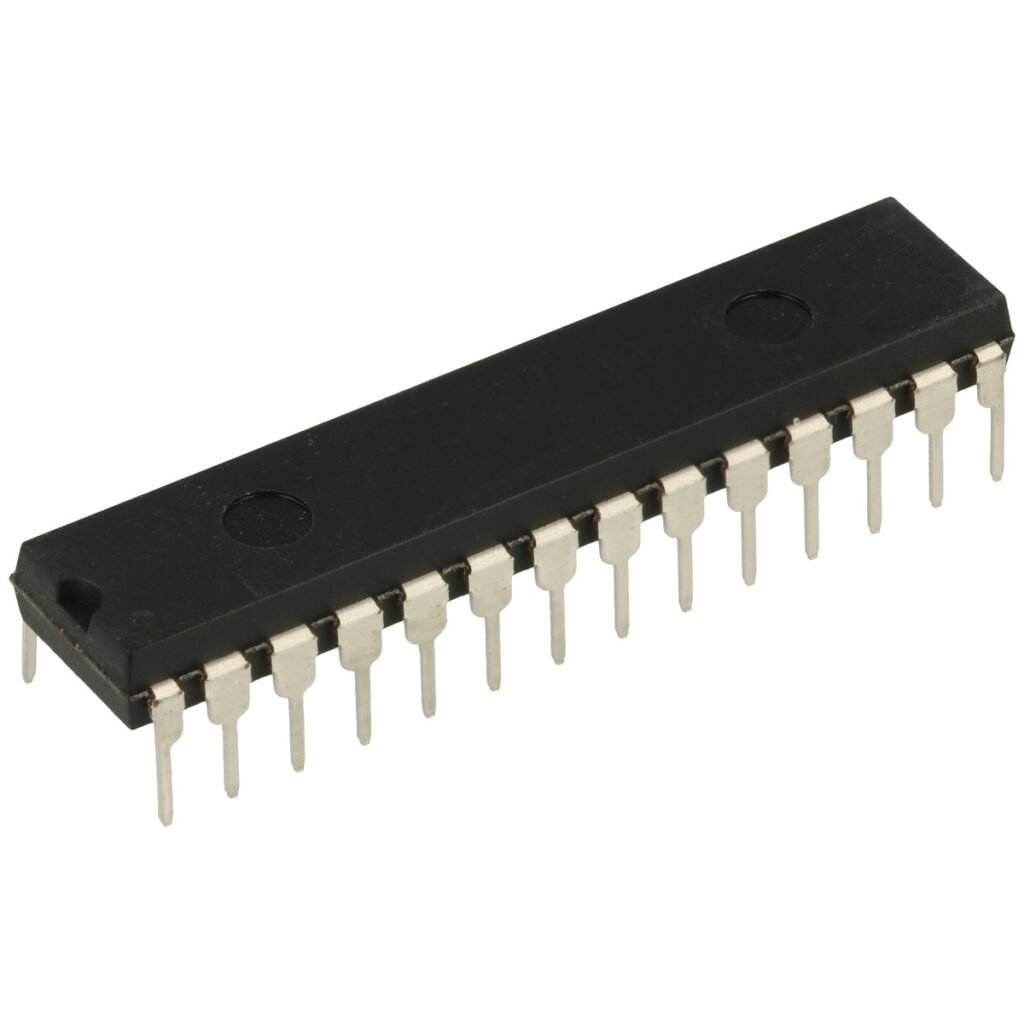
Electronics has played an extremely important role in all branches of modern industry for many years. It allows automation of production processes, precise control of machines and equipment, collection and analysis of huge amounts of data, and implementation of systems based on artificial intelligence.
Table of Contents
Introduction to industrial electronics
In order to design and build modern intelligent production lines and robotic industrial systems, a thorough knowledge of basic electronic components and circuits is essential. This comprehensive article takes a closer look at key electronic components used every day in the industry and describes their construction, parameters, properties and typical applications.
Key circuits and electronic components in industry
Basic electronics components
The group of basic electronic components includes:
- Resistors – passive elements used to limit the current in electrical circuits. They are characterized by resistance measured in ohms. With the resistors, it is possible, among other things. Limiting currents and voltages, dividing voltages and protecting other components from overloads.
- Capacitors – passive elements used to store energy in an electric field. Their most important size is their capacity, measured in farads. Capacitors allow, among other things. for filtering electrical signals, smoothing supply voltages and shaping frequency characteristics of systems.
- Coils – passive elements used to store energy in a magnetic field. Their basic parameter is inductance, measured in henries. The coils are used in applications such as. In resonant systems, low-pass filters and mutual inductance systems.
- Diodes – semiconductor elements that conduct electricity in one direction only. Diodes are used, for example, to rectify alternating current, stabilize and limit voltages, detect high-frequency signals and generate electrical oscillations.
- Transistors – semiconductor elements used mainly to amplify electrical signals and act as electronic switches. Thanks to the transistors, it is possible, among other things. Construction of logic circuits, amplifiers, generators and voltage stabilizers.
Electronic circuits
In addition to the components listed above, an important group of electronic components are various integrated circuits, which contain from several to even several billion electronic components in a single housing. Examples of such systems are:
- Microcontrollers – miniature computers on a single integrated circuit that contain, among other things. Processor core, Flash memory, RAM and input/output circuits. They are the basic elements of industrial control and automation systems.
- Processors – signal integrated circuits containing embedded processor cores optimized for high-speed processing of analog and digital signals. They are used, among other things. In measurement and diagnostic systems.
- Analog-to-digital converters – integrated circuits used to convert continuous signals (voltage and current) into digital form. They enable digital processing and analysis of sensor signals.
- Operational amplifiers – integrated circuits used, among other things. for amplifying weak sensor signals, building analog filters and voltage comparators.
Basic electronic components – industrial applications
Industrial electronics components
Basic electronic components, such as resistors, capacitors and inductors, have a very broad spectrum of applications in industrial electronics. They allow, among other things. on:
- Limiting and dividing voltages and currents in power and control systems.
- Filtering signals to eliminate interference and noise.
- Impedance matching and elimination of interference in signal lines.
- Building timing circuits and function generators.
- Coupling and transmission of signals between different electrical circuits.
Applications of basic electronic components
Basic semiconductor elements such as diodes and transistors, in turn, make it possible:
- Rectification of AC voltages and generation of voltages and currents with certain parameters.
- Amplifying and shaping electrical waveforms.
- Processing and amplification of weak sensor signals.
- Switching and modulating electrical circuits.
- Building logic circuits and digital industrial automata.
Electronic components and circuits in industry
Modern integrated circuits, such as microcontrollers, signal processors and PLDs make it possible:
- Intelligent control of machines, equipment and entire production lines.
- Automated collection, processing and analysis of measurement data.
- Rapid response of control systems to real-time events.
- Communication and data exchange between industrial system components.
- Self-diagnosis and error reporting by devices.
Electronic circuits and components – list for industry
The following is a sample extended list of the most important electronic components and circuits, along with their applications in industry:
- Resistors – limiting currents and voltages, voltage dividers, overload protection.
- Capacitors – supply voltage filtering and smoothing, circuit matching, battery-backed memories.
- Coils and transformers – galvanic separation, circuit coupling, low-pass filters.
- Rectifier diodes – voltage and current rectifiers, switching power supplies.
- Zener diodes – voltage stabilization and limiting, surge protection.
- Transistors – amplifiers, switches and power controllers, digital and logic circuits.
- Thyristors and triacs – electronic contactors and power regulators.
- Optoelements – galvanic separation of control and measurement systems.
- Microcontrollers – machine control systems, programmable logic controllers (PLCs).
- Signal processors – high-speed processing of analog and digital signals.
- A/C and D/A converters- electronic measurement systems, data acquisition systems.
Electronics components and electronic circuits – examples of applications
Electronics in the automotive industry
Modern cars and trucks contain a huge number of electronic components and systems that enable, among other things:
- precise engine control (microcontrollers controlling fuel injection, ignition)
- Automated gearboxes and braking systems (hydraulic and pneumatic cylinders with electronic control)
- Safety and driver assistance systems (sensors, cameras, radar, ABS, ESP)
- digital multimedia and navigation systems (LCD and TFT displays, audio and video players)
Microelectronics in medicine and diagnostics
Electronics also play an extremely important role in modern medical and diagnostic equipment. Components such as sensors, signal transducers and control microcontrollers make it possible, among other things:
- rapid digital analysis of blood and other body fluid samples
- precise measurement of patients’ vital signs
- Operation and control of advanced imaging techniques (ultrasound, computed tomography)
- Programming and personalization of artificial organs and prostheses
Electronic components – other applications
Other examples of the use of electronics in industry include:
- automation and control systems for production lines and machines
- electronic measurement systems and sensors of process parameters
- smart meters and energy metering systems
- electronic locks and building access control systems
Summary and future of industrial electronics
Basic electronic components and circuits are the foundation of modern systems and equipment used every day in industry. They make it possible to increase the efficiency and flexibility of production lines, reduce machine breakdowns and improve technological processes. With advances in electronics, computing and artificial intelligence, automated industrial systems will become increasingly complex and autonomous.


